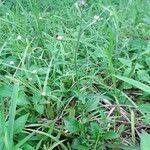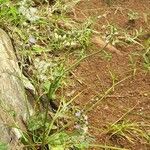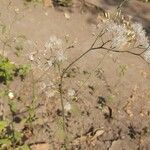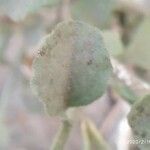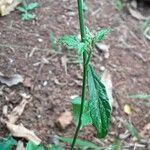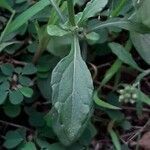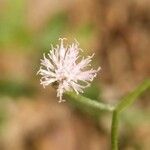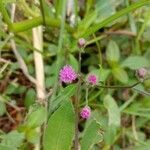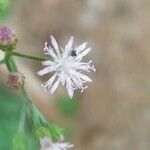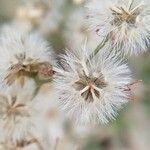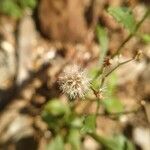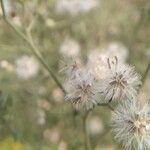Erect, annual herb to 1.25 m high; internodes ribbed, pubescent to cinereous-scabridulous. Leaves polymorphic, linear-lanceolate to elliptic, ovate to obovate-spathulate; basal and lower leaves (1–) 2–7 (–8) cm long, to 5 cm wide, sinuate-serrate to pinnatifid or ±entire, adaxially glandular-punctate, sparsely hairy and green, abaxially thinly to thickly fulvous-pubescent or ±glabrous; uppermost leaves often sessile and much smaller. Capitula in lax, terminal corymbs 2.5–5 mm diam.; peduncles 5–12 mm long; involucre cylindrico-campanulate, 2.5–3.5 mm wide; bracts hirsute and glandular, often purplish-tipped; outer bracts subulate-lanceolate, 1.5–2 mm long, acuminate; inner bracts narrowly lanceolate, 2.5–4 mm long, awn-tipped. Florets 15–20 per capitulum, mauve, purple or lilac; corolla tube 3–4 (–5) mm long; lobes hairy and glandular distally. Achenes terete, ±ribless, to 2 mm long, densely setulose, glandular. Pappus biseriate; outer bristles subulate; inner bristles linear, (3–) 4–5 mm long.
An annual erect herb with stout spreading branches. It can continue to grow from year to year from its rootstock. It is about 50-100 cm high. The stems are firm and rounded but with ribs. It sprawls over other plants. The leaves have almost no leaf stalk and they are 2 to 12 cm long and shallowly toothed. The leaves are sparse on the upper stems. Leaves are paler underneath. About 40 to 70 flowers make up the flower head. This head is 2.5 mm across. The flower bract is green and the flowers pale purple.
Leaf blades 20–35(–50+) × 12–25(–30+) mm (including petioles). Peduncles 3–10(–20+) mm. Bracts ± linear at proximal nodes, wanting distally. Phyllaries 3–4 mm. Cypselae 1.5–2 mm; pappi white, outer scales 0.1–0.3 mm, inner bristles 3–4 mm. 2n = 36.
